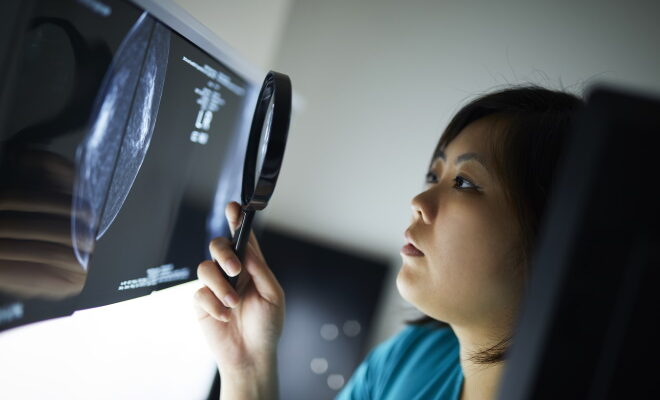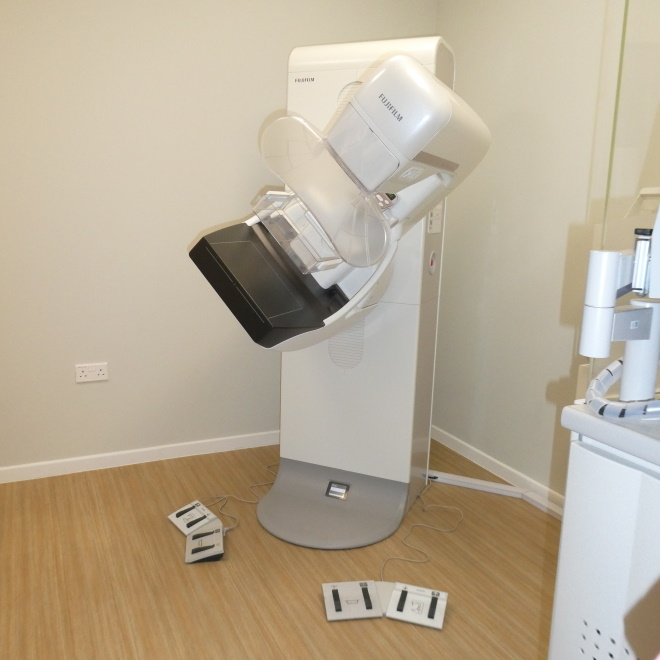
The Gen XY Lifestyle
A 3D mammogram screening can increase the early detection of breast cancer
An annual mammogram screening is proven to be the best way to detect breast cancer. However, the type of mammogram done can be crucial in helping detect invasive breast cancer.
In Singapore, breast cancer is the most common form of cancer in women, and the leading cause of cancer mortality in women, contributing about 17 percent of cancer deaths. An annual mammogram for women aged 40 and above can help detect breast cancer earlier, that might utilise less aggressive treatment and contributing to a higher rate of survival.
Luma Imaging Women’s Centre utilises the latest generation of 3D mammogram that has lower radiation dose, as compared to conventional 2D mammogram.
What are the differences between a 3D and 2D mammogram?
The 3D mammogram has been clinically proven to increase the early detection of invasive breast cancer by 54 percent. Up to 30 percent of cancers are not detected by the standard mammograph, and mammographic sensitivity decreased up to 48 percent in women with extremely dense breasts*.

Early detection leads to an almost 100 percent cure rate and reduces unnecessary call-backs for additional images by 37 percent.
On top of that, it also reduces radiation and it is more cost effective, especially if a 2D mammogram requires more views.
What happens during a 3D Mammogram?
A 3D mammogram is extensively used to detect the onset of breast cancer. Each breast is imaged in two different positions.

Compared to conventional a 2D mammogram where the X-ray tube takes a single picture from each position, the 3D X-ray tube scans the breast in arc in four seconds. In conventional 2D imaging, overlapping structures at various depths within the breast are superimposed and may be difficult to distinguish as separate structures.
With 3D imaging, the images slice through the breast at various depths, allowing these structures to be seen clearly and distinctively.
Flexible paddle technology used with these machines reduces discomfort from the compression by allowing the paddle to fit the natural shape and curvature of the breast, thus distributing the pressure evenly across the compressed surface. These state-of-the-art machines also allow the detected lesions to be accurately targeted for biopsy under 3D guidance.
Small early cancer growth can be more readily distinguished from the overlapping normal glandular tissues within the breast.
It is very important for women to understand that breast health is crucial and it shouldn’t be taken for granted. Many women defer going for mammogram screening because of many reasons such as discomfort, pain or fear of exposure to radiation. At Luma, we are focused on
Dr Eugene Ong, Imaging Director, Consultant, Radiologist and Co-Founder of Luma
breast imaging. Combining technology and expertise, a 3D mammogram is better tolerated than a 2D study. Multiple studies show the benefits of 3D mammogram in finding more cancers and reduces the number of false-positives. Regular screenings will reduce the risks of
undetected breast cancer.
Women’s Imaging Centre.
References:
*Kolb TM, Lichy J, Newhouse JH. Comparison of the performance of screening mammography, physical examination, and breaste US and evaluation of factors that influence them; an analysis of 27,825
patient evaluations. Radiology. 2002;25(1):165-175. Doi: 10.1148/radiol.2251011667
Image credit: Luma Imaging Women’s Centre






